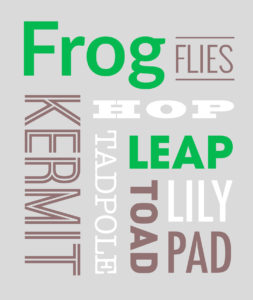 A great story draws you in. Storytelling on your website can do the same thing for your web visitors.
A great story draws you in. Storytelling on your website can do the same thing for your web visitors.
Everyday we use stories to inspire, to entertain and to educate. Storytelling is an extremely powerful tool for any business because it creates an emotional, human connection and gives meaning to your brand.
You can incorporate visual storytelling in website design in numerous ways to capture web visitors’ attention, create an emotional connection, and make the information and your business more memorable.
How to Use Storytelling in Web Design
1. Know Your Audience
If you want to create a compelling story, you first need to know your audience.For your website, you’ll need to better understand your web visitors in order to create an engaging story. Consider the different types of visitors coming to your site – potential clients, existing clients, partners, prospective employees, etc.
Think about what is prompting someone to come to the site and what the visitor may be hoping to achieve during their visit. During a website project, you may work with a web strategist who guides you through these steps.
But outside of a project, you can also get insights into your visitors by interviewing your own team members. Talk to your team members who interact with clients every day. They often have tons of insights into what questions are frequently asked and what concerns are brought up.
2. Create an Emotional Connection

In order to create an emotional connection with web visitors on your site, you first need to consider the personality of your brand. Every brand has a tone of voice and your web design needs to match that, or there will be a disconnect between the site and your brand.
A web designer will then use a combination of imagery, intriguing color schemes, and animation to integrate that brand and your story into the design. Colors are extremely important because they can affect our mood. For instance, the color blue is the color of the sea and sky, so blue is often associated with depth and stability.
3. Define Your Message
Most stories have a core message or moral of the story. If this message isn’t articulated well, you may enjoy the story but not remember that “slow and steady wins the race.”
On a website, you can’t write a long paragraph or even a full book to communicate your message because no one has the patience to read that on a site. You typically only have a few seconds to show who you are and engage the visitor enough that they want to learn more about your brand and services.
That’s why the most important part of the website home page is your web-based value proposition. This is a simple statement that states: who you are, what differentiates you, what you do, and what action someone should take next.
Once you decide on the value proposition, the visual design can support that message through imagery, colors and animation. While the core message or value proposition needs to be very succinct on a site, the design elements don’t have to be literal.
4. Organize and Structure the Content
A good story has a beginning, middle and end. Longer stories are often organized into chapters in order to create structure and to guide the reader to the end of the story.
On a website, your website navigation and how the content is laid out on each page will guide web visitors through your site. The challenge with a website is that there is always more than one path. If you haven’t organized the content in a logical and intuitive navigation, it’s easy for visitors to get lost and then abandon the site. Reducing the number of pages in the top navigation and repeating certain calls to action throughout the site can help keep visitors on the right path.
On each page of your site, a web designer can also use visual hierarchy, which refers to the arrangement of text and objects in order to influence what the human eye perceives.
A designer will use larger font sizes and certain headings to indicate the headline text and then use smaller font sizes for subheadings, so that the visitor reads the content on the page in the right order.
5. Invite the Visitor into the Story
Finally, the most powerful stories make use feel part of the tale. They motivate and inspire so much that we may change our actions and belief after reading them.
That is the goal of storytelling on a website as well. Regardless of the type of site you have (e-commerce, marketing or due diligence), you want the web visitor take some type of action. Calls to action on the website are one of the best ways to tell a visitor what to do next.
But storytelling in web design can also help you influence a visitor. Use the messaging, design and interactive components to tell the visitor what happens at the end of the journey. The more vividly you can describe the happy ending of working with your team or doing that next step, the more motivated a visitor will be to engage.


